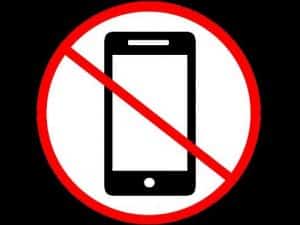Most students know about the IRAC method, but few know about Nested IRAC. The IRAC method is where you identify the issue, state the rule, provide some analysis, and then state the conclusion. But nested IRAC involves creating a separate IRAC for each issue and sub-issue on the exam.
Battery Example
Let me demonstrate this through a tortious battery example. If you don’t recall the elements to battery, you may want to watch my video on battery first.
Derek and John are in the same high school math class. One morning, Derek decides it will be funny to pull out John’s chair just as John is about to sit down. Derek pulls out the chair, and John falls on the floor. John is not physically hurt, but he is extremely embarrassed. Fully discuss which, if any, intentional tort Derek committed.
Now, let’s look at the type of answer I get from my first-year law students:
Typical First Year Law Student Answer
The issue is whether Derek committed a battery against John. Battery is the intentional contact of another in a harmful or offensive manner. Intent is when there is the desire or knowledge to a substantial certainty that the contact will occur. The contact must be direct or indirect. The contact must result in harm or offence. Derek desired to cause John to fall, because he went to John’s chair, waited till he sat down, and then pulled out the chair. Though Derek did not touch John, he knew that by pulling out the chair, John would fall on his rear, causing it to contact the ground. Also, though John was not hurt, a person in high school would be offended by being embarrassed by falling on his rear in front of other students. For these reasons, Derek committed a battery.
Problems
Did you notice that this answer does use IRAC and correctly defines battery and each of the three elements? Unfortunately, it does so in a way that leaves the reader confused. This student expects the reader to connect the intent rule in the third sentence with the analysis in the sixth sentence.
 Now there are some problems with this approach. First, by putting everything into one giant paragraph, you might miss something important. Second, the person grading the exam might not understand that those two sentences go together. Think of your exam as a jigsaw puzzle. Put pieces together that connect to each other, not three rows apart from each other. Third, your answer will look much more professional with a better organization style, which can make the difference between getting a B or an A on the exam.
Now there are some problems with this approach. First, by putting everything into one giant paragraph, you might miss something important. Second, the person grading the exam might not understand that those two sentences go together. Think of your exam as a jigsaw puzzle. Put pieces together that connect to each other, not three rows apart from each other. Third, your answer will look much more professional with a better organization style, which can make the difference between getting a B or an A on the exam.
Nested IRAC Example
Now, let’s look at nested IRAC. On an exam, every time you have a different concept, even if it’s connected to one concept, you should IRAC that concept in its own paragraph.
Going back to our battery example, you should start with a short introductory paragraph that provides the issue, rule, and then a short conclusion for battery as a whole. You then need additional paragraphs for the sub-issues, or elements as they are called. For battery, that means three more paragraphs: one for intent, contact, and harmful or offensive.
The second paragraph then begins with the issue for that paragraph: The first issue is whether Derek had the intent to commit a battery against John. You then provide the rule, analysis, and conclusion for that issue.
Next, do the same thing for the remaining two elements, leaving you with four paragraphs for this battery essay.
Results
When you use this method, you will write stronger answers because you are less likely to miss an issue. For example, in one large paragraph, you might forget the analysis because it’s hidden in a jumbled mess. But with a nested IRAC, as soon as you notice that your paragraph has only two sentences you’ll know there is a problem. So begin practicing now, and consider using the prewriting essay method I discussed in an earlier episode.
If you’re still not convinced, here is a comprehensive discussion on the benefits and dangers of using the IRAC method.



 And finally, this brings us to the primary issue in the case: Does the Due Process clause allow a State court to exercise in personam jurisdiction over an out-of-state defendant who does not have a permanent presence in the State? The Supreme Court explained that historically, in personam jurisdiction required the defendant’s physical presence in the State. This precedent is garnered from Pennoyer v. Neff, which is discussed in this video:
And finally, this brings us to the primary issue in the case: Does the Due Process clause allow a State court to exercise in personam jurisdiction over an out-of-state defendant who does not have a permanent presence in the State? The Supreme Court explained that historically, in personam jurisdiction required the defendant’s physical presence in the State. This precedent is garnered from Pennoyer v. Neff, which is discussed in this video: 
 The Anna C. was moored at pier 52 along with five other barges, all lashed one right next to the other. Over at the next pier, called the public pier, four barges were secured in the same manner. The captain of the tugboat Carroll found these two rows of barges and needed one of
The Anna C. was moored at pier 52 along with five other barges, all lashed one right next to the other. Over at the next pier, called the public pier, four barges were secured in the same manner. The captain of the tugboat Carroll found these two rows of barges and needed one of 


 For example, suppose that someone owns a 10-story office building. One of the sealed windows towards the top, pops out, falls down, and severely injures a pedestrian. At the time the window fell, the office was vacant. In a lawsuit, the building’s owner might try to argue that he doesn’t know why the sealed window popped out. And since he doesn’t know, he must not be negligent. What do you think about that argument? It does have a certain appeal to it. But we should all agree that sealed windows in office buildings don’t magically pop out unless someone is negligent.
For example, suppose that someone owns a 10-story office building. One of the sealed windows towards the top, pops out, falls down, and severely injures a pedestrian. At the time the window fell, the office was vacant. In a lawsuit, the building’s owner might try to argue that he doesn’t know why the sealed window popped out. And since he doesn’t know, he must not be negligent. What do you think about that argument? It does have a certain appeal to it. But we should all agree that sealed windows in office buildings don’t magically pop out unless someone is negligent. The phrase res ipsa loquitur comes from a mid 19th century British case called
The phrase res ipsa loquitur comes from a mid 19th century British case called 
 Tip #4
Tip #4
 Undergraduate Majors
Undergraduate Majors
 Tip 5
Tip 5
 Step two: pretend you are teaching the topic to someone else, preferably a high school student. This means that you must make it simple enough for them to understand, including word choice and sentence structure. All too often, a law student will copy a rule verbatim from a case. While the rule statement may be accurate, how likely are you to remember antiquated language from the early 1900s or earlier? For example, when you take Business Associations you will likely read Benjamin Cardozo’s classic case Meinhard v. Salmon. Your professor will certainly focus on these words for establishing the standard of care:
Step two: pretend you are teaching the topic to someone else, preferably a high school student. This means that you must make it simple enough for them to understand, including word choice and sentence structure. All too often, a law student will copy a rule verbatim from a case. While the rule statement may be accurate, how likely are you to remember antiquated language from the early 1900s or earlier? For example, when you take Business Associations you will likely read Benjamin Cardozo’s classic case Meinhard v. Salmon. Your professor will certainly focus on these words for establishing the standard of care:

